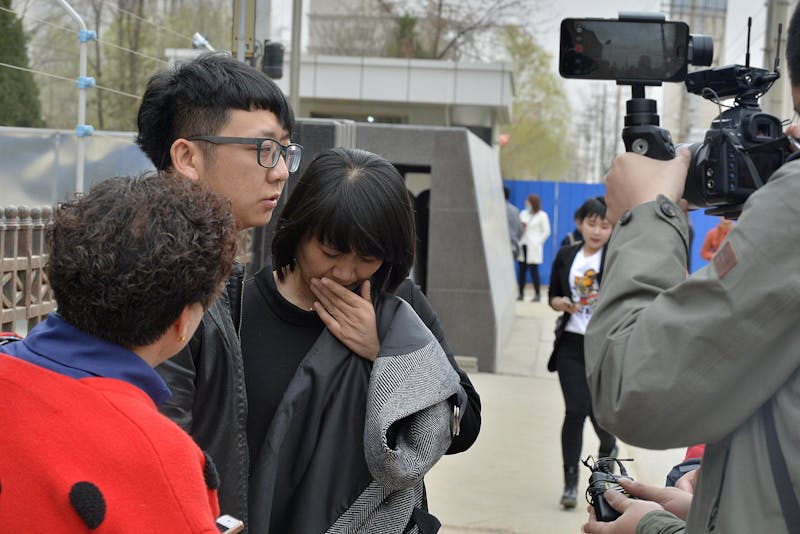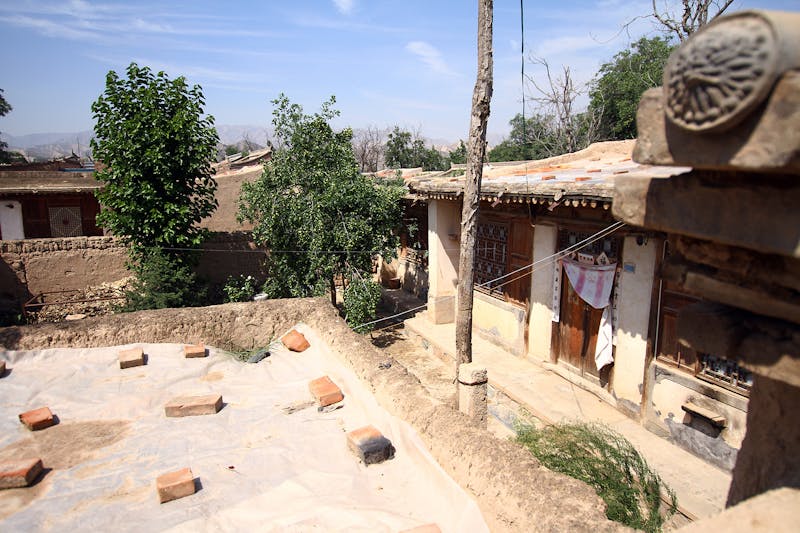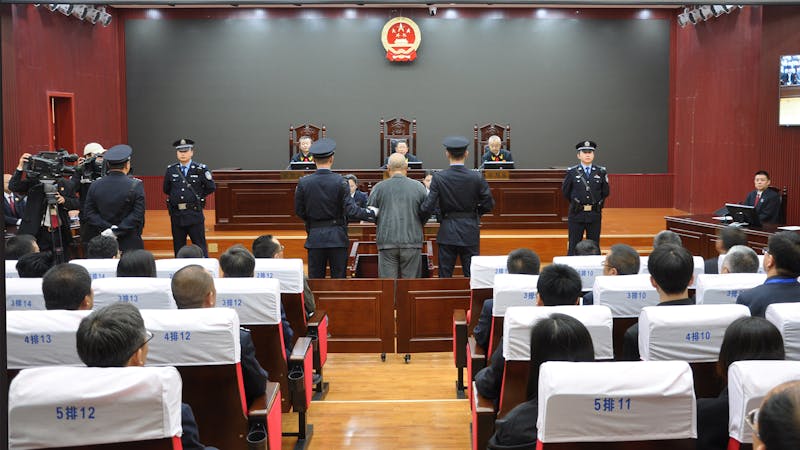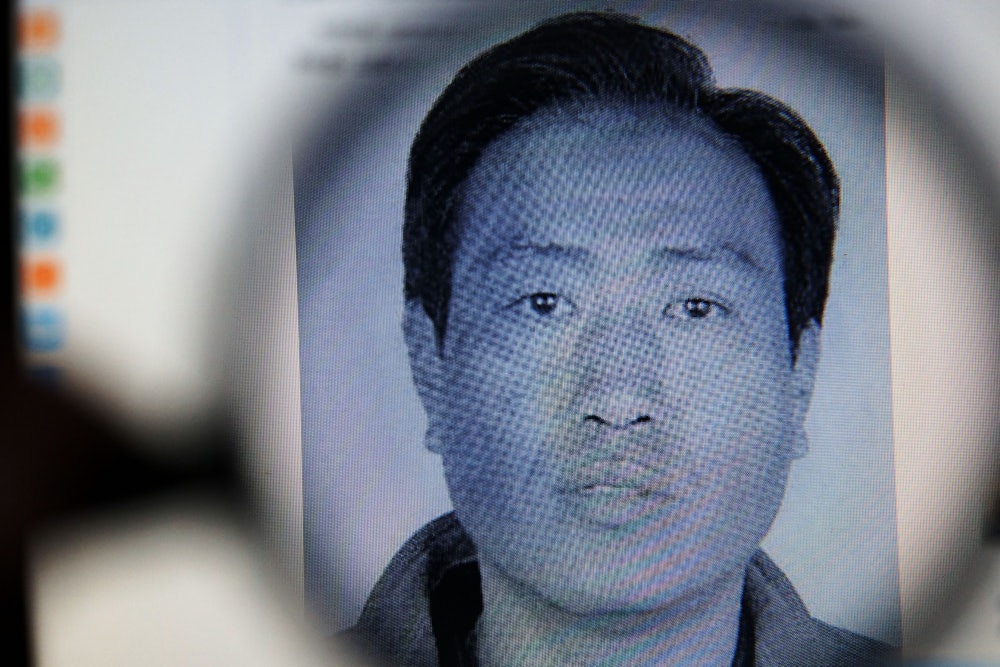It was Chinese New Year, a weeklong celebration of fireworks
and family to scare up good fortune and dispel evil spirits, when the killer
went on the prowl again.
He picked a young worker walking home, and followed a ways behind. He’d done it before, many times, enough to perfect his technique, but things did not go as planned that winter’s night. His crimes were already notorious and the target realized the danger; she fought back tooth and nail, locked the door, and frantically called her husband.
It was then, she said, that her would-be killer reappeared, grinning outside her window. When her husband reached her, the couple checked again: There he still was, still laughing. By the time police arrived, though, the smiling apparition had vanished into the New Year’s night, blending into the carefree popping of corks and firecrackers—and the 14-year pall of fear and suspicion one phantom had managed to cast over a remote city of 1.7 million in the world’s largest authoritarian country.
“Our parents used to talk about it sometimes,” Sun, a friend who grew up near the northeast city where at least one of the killings occurred, told me. “When we were growing up, kids weren’t allowed to go out after dark ... and my mom never let me wear anything red.”
Between 1988 and 2002, multiple women were murdered in the cities of Baiyin, Gansu province, and Baotou in Inner Mongolia, some five hundred miles to the northeast. Media reports on the crimes would come under the strict control of China’s propaganda departments and, even today, outsiders reporting on the subject are met with a near-impenetrable wall of silence. Still, stories spread: the victims were young, female, pretty; their bodies had been horribly desecrated; the killer was said to favor long-haired girls, in high heels, wearing red. Only some of these tales were true—but they were the worst ones.
In August 2016, nearly three decades after the killings began, and after years of inactivity from the killer, police sensationally revealed the most unremarkable suspect: Gao Chengyong, a 52-year-old recluse who shared a campus grocery store with his wife. Gao quickly confessed, Chinese media reported. Suggestions that there may have been other survivors, or that Gao had killed more, came to naught. During sentencing in March of this year, prosecutors addressed only the official charges: the rape, mutilation, and murder of 11 women. In the two years since Gao’s arrest, the reasons for his crimes have remained as elusive as the killer himself—a function both of the inscrutable perpetrator and a compulsively secretive law enforcement, reluctant to talk about a period in which Chinese forensic methods had yet to catch up with behavior unleashed during decades of rapid and chaotic economic development.
Why had Gao suddenly stopped in 2002? The botched encounter in 2001 was one possibility; growing family pressures another. The killer was getting old, less able to subdue young women. Remarkably, he’d even acquired a reputation for filial piety among his naïve neighbors, having nursed a sick father and raised two children. His eldest son was born back in 1988, the same year the killings began.
His first victim was 23. Her body had 26 knife wounds. At 24, Gao was only one year older than Bai, whose friends and family always called her “Little White Shoes.” He would later claim it was only meant to be burglary when he broke into the factory bungalow where her family lived. But Bai woke, and Gao struggled to silence her, ultimately strangling her to death. Her brother, in his room just a few feet away, never heard a thing; the volume on Bai’s snazzy new tape-deck was turned up all night. Gao sat after, leafing through Bai’s photo album, staring at the girl’s frozen image for hours; then he destroyed the pictures and went home to his pregnant wife. Burn after reading: It would become a pattern. But six years apparently went past without him killing again in Baiyin; meanwhile, the city itself began its own slow death spiral.
During the Mao era, Baiyin had been a flagship of the planned economy, an industrial powerhouse built on wealth from copper ore. Miners and metalworkers were dispatched from across China to help exploit the rich seams found in this impoverished region’s dusty bowels; women from other work units were sent afterward to join them, and start families. After a while, the city flourished: “Baiyin Metals employees were the city’s trendsetters,” reported Shanghai-based media startup Sixth Tone. “They were the first to have perms, turtleneck sweaters, bell-bottom pants, whatever was popular at the time.” As one resident put it: “The people of Baiyin were different from those of other parts of Gansu.”
Community bonds were stronger in mid-century Baiyin, too, partly due to the collectivist spirit of the age, but also because social mobility was strictly limited by the country’s household registration (hukou) system, which tethered almost all Chinese to their birthplace. During the gold rush years, the restrictions gave few reason to worry. But by the mid-1990s, the copper-producing region was barely recognizable to those who remembered its heyday. Like the U.S. in the late 19th century, China was rapidly industrializing, and undergoing seismic societal shifts. The “traditional family style of living”—a Confucian ideal of “four generations under one roof ... where everyone kept an eye on each other” began to break up, as international forensic scientist Dr. Henry C. Lee explained in a phone interview from New York; old hukou restrictions were relaxed, giving a vast and itinerant blue-collar population access to newly developed routes and infrastructure, as railroads, freeways, and ports—and, just as in the U.S., where early 20th-century murderers like the Cleveland Torso Killer, Chicago’s H.H. Holmes, and the Mad Axeman of New Orleans began preying on a ready supply of “low end” migrant populations (day laborers, runaways, vagrants, sex workers, addicts), the age of the serial killer was dawning in China.
As Baiyin’s ore started to run out toward the end of the 1980s, the prosperous mining town lost its luster, and began to resemble those other moribund parts of the state-run economy that were being unsentimentally dismantled during a fresh swathe of economic reforms. The city’s wealth and revolutionary image tapered off, its sense of communal prosperity gradually replaced with rising unemployment, youth gangs, mass migration.
The second killing came on a July afternoon in 1994, when a 19-year-old cleaner disturbed a man wandering the dormitories at the Baiyin Power-Supply Bureau. Gao slit her throat and stabbed her 36 times. Four years after, a 29-year-old third victim was found naked with 16 wounds and a fresh signature: Parts of her scalp and ears were missing. Only three days later, Gao killed again, this time taking portions of his victim’s breast and torso.
Returning to Baiyin’s Power-Supply Bureau on July 5, Gao encountered 8-year-old Miao Miao at around six in the evening, waiting for her parents; he raped the child, strangled her with a leather belt, then poured himself a cup of tea from a flask on the kitchen table. Later, police would ask how old Gao’s own son was at the time. Ten, he replied. “I stared at him, and he stared back for almost ten seconds, before lowering his head,” the interviewing officer told the Beijing News. “My fist was raised [and I] almost slammed it into his face.”

Four months later, factory worker Cui Jinping was found by her mother in a pool of blood, her body horribly mutilated. It was Gao’s fourth kill in a single year, and the city was now in full panic: Police began sweeping neighborhoods, conducting door-to-door interviews, tossing apartments, in a desperate hunt for witnesses or clues.
Meanwhile, and perhaps unwittingly, authorities were sitting on a motherlode of evidence—DNA samples collected from multiple crime scenes. At the time, forensic analysis was still in its infancy, with budgets extremely tight. Indeed, up until the mid-1980s, most Chinese police did not have proper uniforms, stations, squad cars, or tactical equipment. It was only in 1983, after a pair of gun-toting homicidal brothers went on a six-month robbery spree that left over a dozen dead and wounded in their wake (including several soldiers and officers), that the government realized its newly emerging capitalist society would need serious and well-funded policing.
In northeast China in the mid-’90s, demand for rigorous policing still far exceeded supply. Factory closures had left millions without jobs or the skills to find new ones; there was mass unrest in many places, most meeting with swift reprisals from the state. Lacking social security, many resorted to petty crime to get by. And in the chaos, those inclined to darker deeds could operate with relative freedom.
By 1994, there were “almost certainly several serial killers” aside from Gao at large in the area, according to one source in the regional public security bureau, who spoke on strict condition of anonymity. They described a region where unemployment, despair and lawlessness abounded, and life was short and cheap. “The murder rate was very high at that time”—certainly much higher than any official figures show—“and many people did terrible things.” Only in the last decade or so has law managed to reassert itself in some of these remote and often-depressed districts.
But after the killings in 1998, the brief surge in street-level policing did manage to scare at least one of Baiyin’s bogeymen into temporary hiding.
Gao Chengyong was born in 1964, in Chenghe, a small county in Gansu, a perpetually poor province. Questioned by Chinese media after the arrest, his neighbors struggled to recall much about the quiet youngster; certainly, Gao didn’t much take to the agrarian life. By his late teens, he’d joined the sea of restless workers taking advantage of Deng Xiaoping’s reforms and a more relaxed houkou system, which previously had strictly curtailed internal migration. In this new era, low-skilled laborers were able to take work where they could, moving on when they couldn’t, though the houkou still restricted their rights: A migrant like Gao could live in a place like Baiyin, but not access the benefits of better education, health, social security that such cities afforded. This caste-like policy enabled China’s emergent urban middle-class to enrich themselves on the backs of a largely disenfranchised and docile labor force that did most of the hard work. For most, the houkou was a social trap. For some, though, it proved a license to roam, adventure—or in Gao Chengyong’s case, to kill anonymously, an unregistered rogue amidst the closely monitored masses.

Gao was one of many “disorganized” murderers now roaming the country, with some amassing startling body counts: There was “Monster Killer” Yang Xinhai, who broke into farmhouses and killed all occupants, totaling 65 victims; Peng Maiji who used a meat cleaver to murder 77; Wu Jianchen, who killed 15; and Wang Qian, with 45 known victims. The apparent absence of motive, and arbitrary distribution of their crimes baffled police. Judicial disinterest, and jurisdictional restrictions, ensured that many murders were never even linked at the time. While the public remained largely in the dark about such threats, police were, at least, able to associate the Baiyin killings with a single suspect, even if he continued to elude them.
Though pressed into inactivity after the policing surge, Gao’s restraint lasted no more than a few years. He “just felt the need to kill someone,” he later told police. His methods were neither particularly organized or clever, as he afterwards admitted. While the rumors had insisted he had a fetish for red clothing or long hair, Gao later confessed he had merely wandered the streets in a fitful rage, choosing victims for their “appearance and suitability.” The post-mortem mutilations became his revenge for their initial resistance; he took care to don dark clothing to mask any blood spatter. In May 2001, a few months after his failed Spring Festival assault, Gao attacked and killed a 28-year-old nurse at her home, near the same address as his fourth victim.
Police enlisted eight specialists from the Ministry of Public Security, including Zhang Xin, Senior Engineer of Criminal Technology at the Shanghai Railway Public Security Bureau and an expert in facial composition. Gao’s bungled 2001 assault had left behind not just a terrified couple, but a police officer who’d observed a similar-looking suspect en route to the scene. Based on their descriptions, Zhang Xin produced a triptych of portraits. But his illustrations were only used internally, withheld from the media to avoid, in Zhang’s words, “a negative impact on the investigation.” Police launched a citywide dragnet collecting fingerprints from over 100,000 men, using the portraits as a reference. Although this effort represented the authorities’ most concerted attempt yet to catch the killer, the public never saw them.
Their efforts led nowhere. Gao’s last confirmed victim would meet her end on February 9, 2002, about a year after he’d failed to force his way into the young woman’s apartment. Twenty-five-year-old Ms. Zhu had been rooming long-term at the fleapit Taolechun Hostel before she had the misfortune to run into Gao. Her decomposing body was found 10 days later, stripped, raped, her throat cut. Afterward, Gao had gone home, perhaps alone, or to his wife or one of his sons, who usually saw him only once a year, around Spring Festival; one of the times he liked to hunt.
It would be his final crime. Perhaps, at 38, the homicidal urges had waned along with his physical strength. Since his arrest in 2016, though, Gao has proved a case study in disinterested sociopathy; asked why he took a first six-year hiatus after 1998, he told investigators he “didn’t know.” Gao has given only detailed recollections of his actual crimes, all delivered with a deadpan disposition. “Gao’s calmness is unimaginable… terrifying. He remembers everything clearly,” one interviewer said. But he has offered no clue as to motive—or how he eluded the manhunt for nearly three decades.

Only a mixture of fortune, fortitude, and forensic science caught up with him. After the murders ceased in 2002, detectives were left flailing. Many of the original crime scenes had been trampled on by a parade of rookie cops and officials, and fingerprint comparisons still involved step-by-step inspections with a magnifying glass; lead investigator Zhang Enwei says his team personally combed through over 230,000 sets of prints. In addition, profilers had advised police to look for a loner with a “sexual perversion … [who] hates women …reclusive and unsociable, but patient.” As a shopkeeper with two children, Gao seemed to be a model migrant, a married man who’d nursed his dying father through sickness and sent his sons to college.
“There was very little physical evidence,” as Detective Zhang Enwei told the Beijing News. On guard against all media while their investigation was ongoing—those working on the case had been instructed that any leaks would lead to instant dismissals, and see the case transferred to a different department—officials have only hesitantly opened up to local reporters since Gao’s arrest. Foreign reporters are almost universally shut out, for fear that officials will be punished if their name appears in an overseas article offering a negative impression of China.
Asked to be interviewed for this story, Detective Zhang declined, as did eight other experts. Gao’s own lawyer first agreed, then a week later pulled out, saying “leaders” had forbidden him from contacting foreign media. “People in the public security system are extremely wary of foreigners,” an intermediary of Zhang’s explained. “You can file a formal application through the police bureau”—an action tantamount to feeding it through a shredder.
Nervousness about the media, and foreigners in particular, has increased during Xi Jinping’s presidency. The secrecy extends to all levels of policing, including statistics. “Countries such as China do suppress information about crime,” Dr. Mike Aamodt, who compiled the Radford University/FGCU Serial Killer Database, told me. “One must be very cautious in interpreting any crime statistics from these countries—including the frequency of serial murder.” There are only 62 known serial killers in China, according to Dr. Aamodt’s latest statistics, which must rely on “Internet and English media sources” rather than public documents and court records. That’s to be compared to 3,376 known serial killers in the U.S., a population of over 325 million. “Estimating how many actual serial killers there have been in China is impossible,” Dr. Aamodt admits. “I would not be surprised if the actual rate is similar to the rate in the United States.” If it were, a population like China’s, over four times that of the U.S., could expect over ten thousand serial killers—not 62.
Chinese law enforcement, once dependent, according to Dr. Lee, on “traditional methods of interview and interrogation,” has advanced at a dizzying rate in the last two decades, “training [detectives] to international standards” and installing “laboratory facilities more advanced than many in the world.” Still, it wasn’t until 2010 that a proper forensics laboratory was established in Baiyin, and science could finally catch up with Gao and his DNA—or rather, his cousin’s. While their suspect had studiously spent years avoiding any involvement with authorities, a relative arrested on minor corruption charges in 2016 had given a swab. Computers found a familial match to some of the DNA from the crime scenes, and a task force was assembled to monitor their chief suspect, now working ostensibly as a campus shopkeeper, maintaining his quietly forgettable profile. “Everyone thought [Gao’s wife] was single, because she was the only one ever working,” a teacher told the Lanzhou Morning Post. Even if Gao hadn’t been so reclusive, who would connect the balding “serious looking” shopkeeper that staff remembered with the “murderous madness” of their youth, when nervous schoolgirls would return home over half-term rather than stay and study?
Prosecutors finally presented their case against Gao in July 2017, following an unusual year-long preparation: Prosecutors had to ensure “there are no false positives,” Gao’s lawyer, Zhu Enwai, explained, “Just in case, years later, someone jumps out and says ‘That was me.’”
At the end of a two-day trial at the Baiyin Intermediate People’s Court in Gansu, Gao stood and bowed thrice to his victims’ families, then bizarrely offered to donate his organs. Lacking any explanation, Gao’s act of ritual contrition appears as meaningless as his crimes. And without context or public follow-up, his crimes seem as arbitrary as his capture. But the only eyewitness to his assaults recalled a very different Gao Chengyong than the man who would reappear expressionless, in T-shirt and jeans, to offer his remorse and be sentenced to death in March: a sadist who stood outside her window, defiant, laughing.
